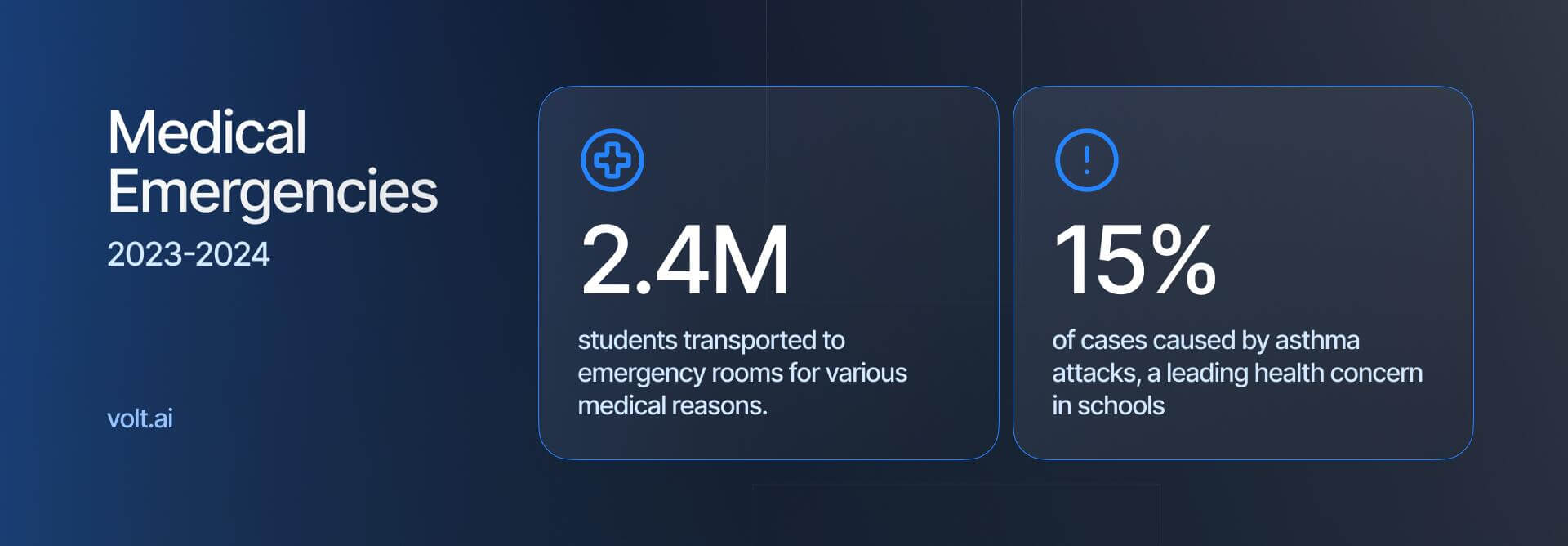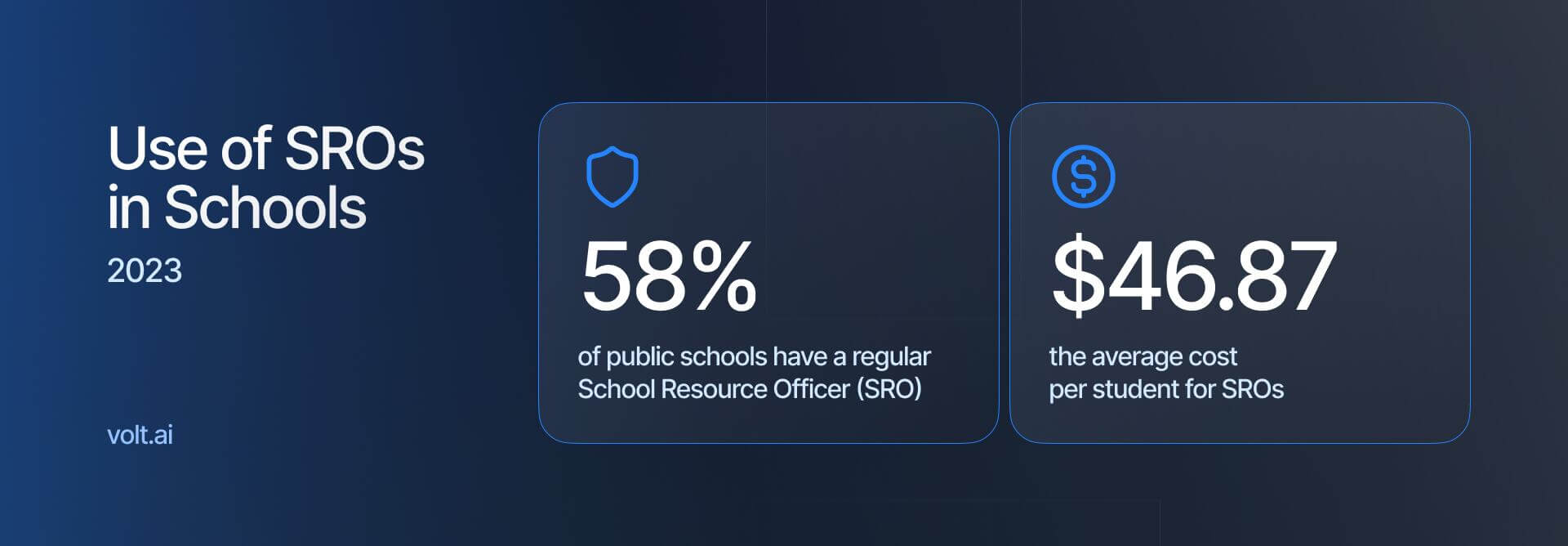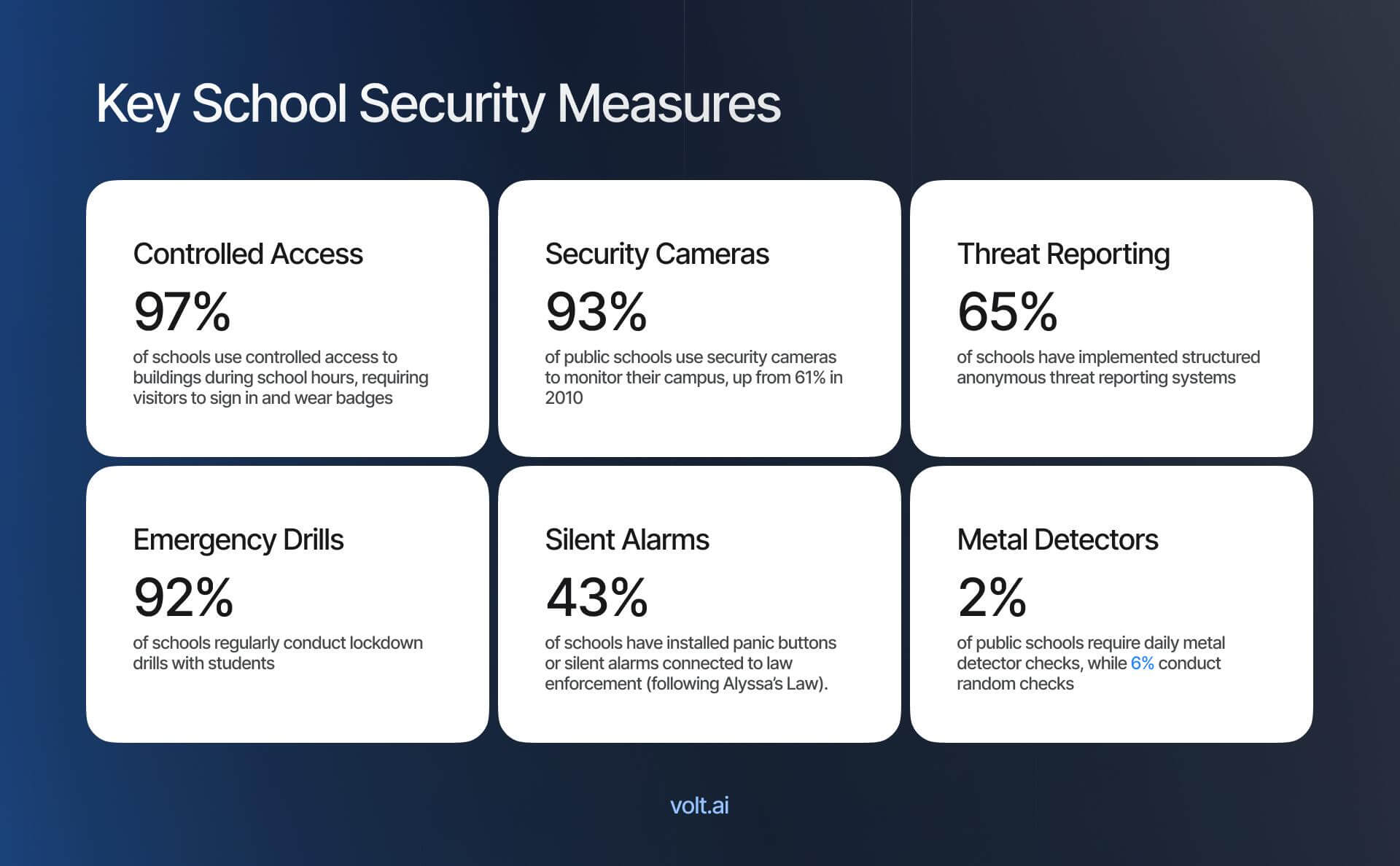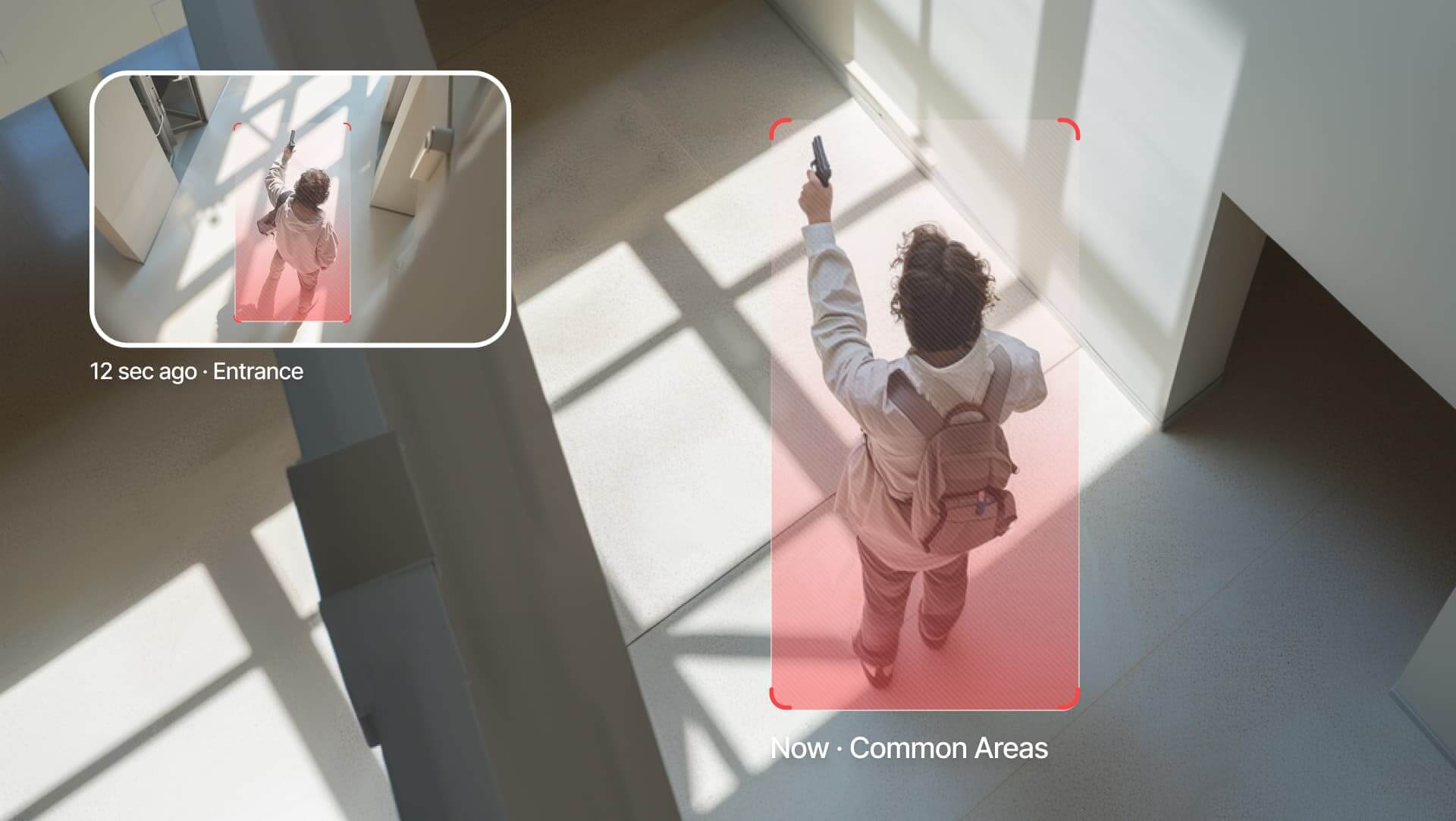Unfortunately in recent years, a high volume of school shootings have turned school safety into one of the most talked about subjects in the media. It comes with plenty of controversy and pain, but one thing most people can all agree on is that reducing instances of violence and maintaining safety for students is a top priority.
Some Key Statistics on School Safety

School Shootings
Total number of shootings in schools: In 2023, there were 346 incidents of gunfire on school grounds in the United States (source).
Deaths and injuries resulting from school shootings: These shootings resulted in 101 deaths and 219 injuries (source).
Where shootings occur: 61% of school shootings happen at high schools, 23.6% at elementary schools, 12% at middle or junior high schools, and 3.4% at other types of schools (source).

Fighting and Bullying
Fighting and violence: As of 2022, U.S. public schools recorded 857,500 violent incidents, with 67% of schools reporting at least one violent incident (source).
Attacks with and without weapons: 61% of schools reported at least one physical attack or fight without a weapon, and 4% reported such attacks with a weapon (source).
Bullying instances in schools: Approximately 20% of students aged 12-18 reported being bullied at school (source).
Cyberbullying instances in schools: Approximately 15% of high school students report being electronically bullied (or cyberbullied) in the past year (source).

Medical Emergencies
In the 2023-2024 school year, an estimated 2.4 million students were transported from schools to emergency rooms across the U.S. for various medical reasons.
Statistics About the Use of School Security Systems

Use of SROs in schools: As of 2023, about 58% of public schools had at least one sworn law enforcement officer (usually referred to as School Resource Officers or SROs) present at least once a week (source).
Cost of a school resource officer: Schools spend an average of $46.87 per student to employ SRO resources (source).

Controlled building access: As of 2022, 97% of public schools reported using controlled access to school buildings during school hours, and requiring visitors to sign or check in and wear badges (source).
Use of security cameras for school safety: As of 2022, 93% of public schools use security cameras to monitor their campus, up significantly from 61% of public schools in 2010 (source).
Anonymous threat reporting systems: As of 2023, 65% of public schools have implemented a structured anonymous threat reporting system (source).
Lockdown drills: About 92% of schools regularly conduct lockdown drills with students to practice emergency management (source).
Silent alarms: 43% of schools report installing panic buttons or silent alarms with direct connection to law enforcement (source). Such silent alarms have increased in use with the passage of Alyssa’s law in numerous states.
Metal detectors: 2% of public schools require metal detector checks on students every day, and 6% of public schools conduct random metal detector checks on students (source).
Learn how real public schools have implemented VOLT AI.
How are Schools Improving Campus Safety?
As is clear from the statistics above, the most commonly adopted methods to improve school safety are the use of:
- Physical security measures like staffing law enforcement officers on campus, controlling access to facilities, and adding security cameras or metal detectors
- Improving emergency preparedness activities and tools with threat reporting systems, lockdown drills, and silent alarm systems
Some interesting insights out of the data points above include:
Security Cameras vs. Metal Detectors
Security cameras have proliferated in usage, while the use of metal detectors have remained somewhat limited. Cameras are easier to install, are less obvious, and create a much more welcoming atmosphere (whereas metal detectors create a prison-like atmosphere and erode peace of mind).
Read the Complete Guide: The Future of School Security in the Modern Era
Proactive vs. Reactive
The majority of the methods implemented are highly reactive in nature and rely on methods for identifying the potential for a violent act that are not necessarily consistent or reliable. They all often are important for response only after a violent act has begun.
Security cameras alone are typically more useful for investigation after an incident, and without the right tools, can only be used proactively if a human is constantly monitoring them. This still can be highly unreliable as the ability to detect and react can still be inconsistent and difficult.
The use of security guards can get costly quickly, and those individuals can only be in one part of the campus at a given time, making coverage of the entire campus reliant on how many SROs can be hired. And, yet again, does rely on the ability of a human to be able to consistently and reliably detect things.

Using Existing Security Cameras to Enter the Next Generation of School Security
Luckily the future can be even better. Schools can now use technologies like Volt.ai to transform their existing security camera systems into real-time incident response systems, without requiring the need for increased staffing.
Volt.ai’s AI security camera software (which can be used with almost any existing security camera systems), can help provide real-time alerts to staff for numerous safety concerns, including weapon detection.
The system can detect weapons reliably and quickly (even when held down to a person’s side) before a school shooting even has the chance to begin. The system can be configured to notify staff, and even automatically notify law enforcement, as well as to trigger lockdown mechanisms across the campus.
When mere seconds can mean the difference between life and death, you want a system that can reliably capture potential issues before they even have a chance to begin. Learn more about how schools like Prescott High School have benefited from Volt.ai technology.
In addition, Volt.ai’s technology can also help prevent incidents of bullying and fighting, as well as quickly alert staff to student medical incidents and unauthorized access to specific areas of campus, leveling up school security protocols on multiple fronts. And, the best part is, it doesn’t break the bank.


